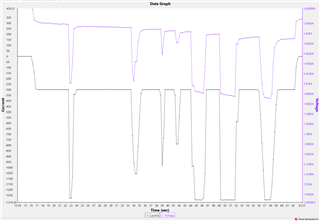We have data from our experiments, charge - discharge cycle. On every cycle, we record the R_a value and also the cell grid.
The TRM said that the cell grid value represents the updated R_a value at the present grid point.
We notice that when our cycle stays between RSOC 20% and 80%, we usually are not able to get grid point above 7.
We understand that this is expected because it needs to be discharged deeper to achieve update for higher grid points.
Surprisingly, we also notice that the R_a 8 to 14 has been updated even when the cell grid never reached that high.
My question is, how does the R_a 8 to 14 is calculated even there's no grid point updated?
Attached experiments log files, that experiences updated R_a 8 to 14 value even no grid point updated.


